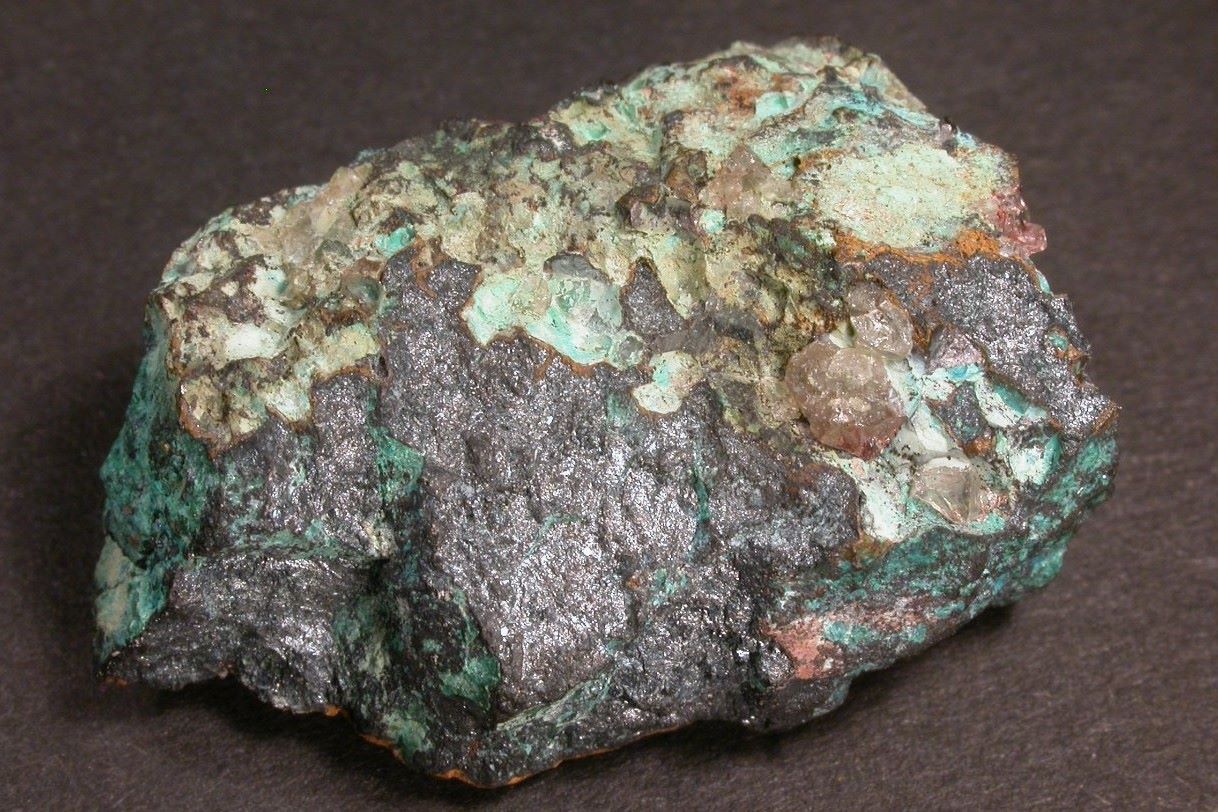
Djurleite is a fascinating mineral that often goes unnoticed. Ever wondered what makes it so special? Djurleite is a copper sulfide mineral with a unique bluish-black color, often found in hydrothermal veins. It’s named after the Swedish mineralogist Carl Wilhelm Djurle, who first described it. This mineral is not just a pretty face; it plays a crucial role in the mining industry. Djurleite is often associated with other copper minerals like chalcocite and bornite, making it an important ore of copper. Its crystal structure is complex, adding to its allure for mineralogists. Ready to learn more? Here are 30 intriguing facts about Djurleite that will make you appreciate this mineral even more.
Key Takeaways:
- Djurleite is a unique copper sulfide mineral with a fascinating history and distinctive properties, making it valuable for research, industrial use, and as a collector's item.
- Understanding Djurleite's formation, identification techniques, and environmental impact is essential for appreciating its significance and ensuring responsible mining practices.
What is Djurleite?
Djurleite is a fascinating mineral that often goes unnoticed. Named after Swedish mineralogist Carl Wilhelm Djurle, this copper sulfide mineral has unique properties and characteristics. Let's dive into some intriguing facts about Djurleite.
Basic Characteristics of Djurleite
Understanding the basic properties of Djurleite helps in appreciating its uniqueness. Here are some fundamental aspects:
- Chemical Formula: Djurleite's chemical formula is Cu₁.₉₅S. This indicates it is primarily composed of copper and sulfur.
- Crystal System: It belongs to the orthorhombic crystal system, meaning its crystals form in three mutually perpendicular axes of different lengths.
- Color: Djurleite typically appears in shades of blue-gray to dark gray, giving it a distinct look among minerals.
- Hardness: On the Mohs scale, Djurleite has a hardness of 2.5 to 3, making it relatively soft compared to other minerals.
- Luster: This mineral exhibits a metallic luster, which means it reflects light in a way similar to metal surfaces.
Formation and Occurrence
Djurleite forms under specific geological conditions. Here's where and how it can be found:
- Formation Environment: Djurleite forms in hydrothermal veins, which are fractures in rocks filled with mineral-rich water.
- Associated Minerals: It is often found alongside other copper sulfides like chalcocite and covellite.
- Global Occurrence: Significant deposits of Djurleite have been found in countries like Chile, Namibia, and the United States.
- Mining Locations: Notable mining locations include the Chuquicamata mine in Chile and the Tsumeb mine in Namibia.
- Paragenesis: Djurleite typically forms at lower temperatures compared to other copper sulfides, often as a secondary mineral.
Uses and Applications
While not as well-known as other minerals, Djurleite has its own set of applications:
- Copper Ore: Djurleite is an important copper ore, contributing to the extraction of copper.
- Research: Its unique properties make it a subject of interest in mineralogical and geological research.
- Collectors: Mineral collectors value Djurleite for its rarity and distinctive appearance.
- Industrial Use: Occasionally, it is used in the production of copper-based products.
Physical and Chemical Properties
Djurleite's physical and chemical properties set it apart from other minerals:
- Density: It has a density of about 5.5 to 5.8 g/cm³, which is relatively high for a mineral.
- Fracture: Djurleite exhibits a conchoidal fracture, meaning it breaks with smooth, curved surfaces.
- Streak: When rubbed on a streak plate, it leaves a black streak.
- Solubility: It is insoluble in water but can dissolve in acids, which is useful in certain chemical processes.
- Conductivity: As a copper sulfide, Djurleite has good electrical conductivity.
Historical and Cultural Significance
Djurleite has an interesting history and cultural relevance:
- Discovery: It was first described in 1962 by Carl Wilhelm Djurle, after whom it is named.
- Etymology: The name "Djurleite" honors the contributions of Djurle to mineralogy.
- Cultural Impact: In regions where it is mined, Djurleite has economic importance due to its copper content.
- Scientific Studies: Numerous studies have been conducted to understand its formation and properties better.
Identification and Analysis
Identifying Djurleite requires specific techniques and tools:
- X-ray Diffraction: This technique helps in determining its crystal structure.
- Electron Microprobe: Used to analyze its chemical composition accurately.
- Optical Microscopy: Helps in studying its physical properties and identifying it in rock samples.
- Spectroscopy: Various spectroscopic methods can be used to study its molecular structure.
Environmental Impact
Mining and processing Djurleite have environmental implications:
- Mining Impact: Extracting Djurleite can lead to habitat destruction and pollution if not managed properly.
- Waste Management: Proper disposal of mining waste is crucial to minimize environmental damage.
- Sustainable Practices: Implementing sustainable mining practices can help reduce the environmental footprint of Djurleite extraction.
The Final Word on Djurleite
Djurleite, a fascinating copper sulfide mineral, holds a unique place in the world of geology. Found in various locations, it often appears in shades of blue and black, making it a striking specimen for collectors. Its composition, primarily copper and sulfur, contributes to its distinct properties and uses.
Understanding djurleite's formation and characteristics can deepen appreciation for this mineral. It's not just a pretty rock; it plays a role in scientific research and industrial applications. From its discovery in Sweden to its presence in modern collections, djurleite continues to intrigue and educate.
Whether you're a seasoned geologist or a curious enthusiast, learning about djurleite adds another layer to the rich tapestry of Earth's minerals. Keep exploring, and who knows what other hidden gems you'll uncover?
Frequently Asked Questions
Was this page helpful?
Our commitment to delivering trustworthy and engaging content is at the heart of what we do. Each fact on our site is contributed by real users like you, bringing a wealth of diverse insights and information. To ensure the highest standards of accuracy and reliability, our dedicated editors meticulously review each submission. This process guarantees that the facts we share are not only fascinating but also credible. Trust in our commitment to quality and authenticity as you explore and learn with us.
